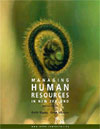 |  Managing Human Resources in New Zealand, 2/e Keith Macky,
Massey University
Gene Johnson,
IQuentis Limited
Pedagogical Tools
Managing Human Resources in New Zealand is a pedagogically rich learning resource. These pages show you how to fully utilise your text package. Getting the most out of your text will help you to do better in your human resource management (HRM) studies.
Learning objectives
Every chapter opens with a showcase of the chapter's learning objectives. These tell you what you should be able to do after you have finished reading that chapter. Make these the foundation for your exam revision by testing that you have mastered each learning objective. For example, after reading Chapter 4, Employment Relations, can you outline the legislation in the Employment Relations Act 2000?
On the Job
These introductory profiles explore the work experiences of real human resource (HR) practitioners, from New Zealand, as they apply HR strategy and decision-making. They provide a necessary context for the concepts and issues discussed in the chapter. What are the HR responsibilities of Lieutenant Commander Beryl Oldham of the Royal New Zealand Navy? How did she instil the Navy's core values of commitment, courage, and comradeship? Find out in Chapter 5, Job Analysis and Competency Profiling.
Key terms and concepts
The field of human resource management has its own language. To help you learn this language, each chapter opens with a list of key terms and concepts that you will encounter in the chapter text. The key terms are boldfaced in the text and to reinforce your understanding of them, they are defined in the margin. Learn the lingo as you go, and review it before your exams.
Checkpoint
'Checkpoint' boxes appear throughout the chapter text and present supporting data 'in a nutshell' to compliment the chapter theories. They 'check in' with students to make sure they have grasped key strategies, definitions and applications. For example, what are the top 10 strategies for generating employee commitment? Find out in Chapter 1, Introduction to Human Resource Management.
A Closer Look
Theory is one thing, but what happens in reality? 'A Closer Look' boxes contain stories that apply the concepts and theories that are discussed in the text to a real-world situation, or shed light on a specific aspect of HRM that is relevant to the chapter theories. Who is the typical New Zealand HR professional? How did the Human Resource Institute of New Zealand begin? Find out in Chapter 3, The Development of Human Resource Management in New Zealand.
PowerWeb
At the end of every boxed example is a link to PowerWeb, an online bank of up-to-the-minute cases and articles on HRM. Search PowerWeb for more information on the topic you are studying. PowerWeb is accessible from this Online Learning Centre (OLC) that accompanies the text. Your PowerWeb card may be packaged with your text or purchased separately from your bookshop.
Review questions
Review questions at the end of every chapter give you an opportunity to reflect upon and consolidate the issues and concepts you have just learned. Discuss the possible solutions to these questions with your peers in a tutorial or take them home to complete as an independent assignment or use them for exam preparation. For example, at the end of Chapter 9, Performance Management and Appraisal, can you suggest why managers might resist implementing performance management; and, think of ways to reduce this resistance might be reduced?
Exercises
End-of-chapter exercises involve a more rigorous application of the concepts discussed and help you build your critical thinking skills. For example, after reading Chapter 13, Contemporary Issues in Human Resource Management, get 'hands-on' with HRM by devising a list of positive actions that might increase the proportion of women in a male-dominated occupation, or get a copy of a local organisation's diversity program and assess how diversity has been defined.
Case studies
It is vital that you are able to use the theory you have learned to explain new situations. Each chapter concludes with a short case that presents a real or hypothetical business problem related to the management of human resources, with an emphasis on practical application. Each case is accompanied by review questions that challenge you to diagnose specific HRM issues.
Recommended reading list
Designed to take your learning further, a recommended reading list at the end of every chapter provides you with the most useful references within each topic area that are ideal for research and further study.
|
|



 2003 McGraw-Hill Higher Education
2003 McGraw-Hill Higher Education

 2003 McGraw-Hill Higher Education
2003 McGraw-Hill Higher Education